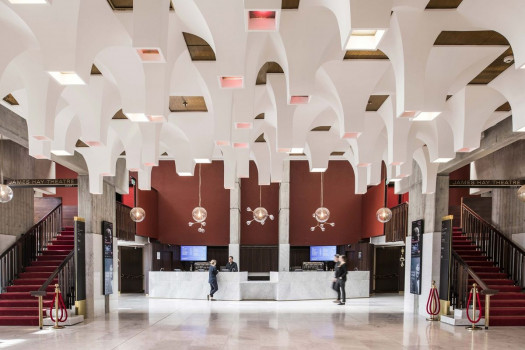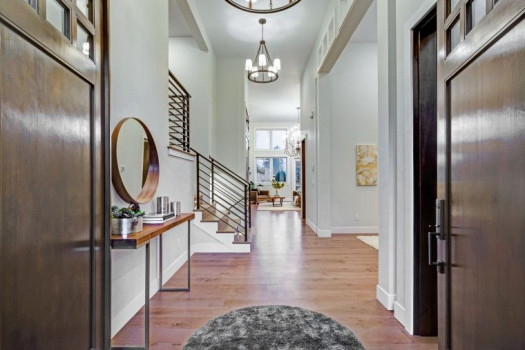Building for climate change: Meeting the architectural challenges



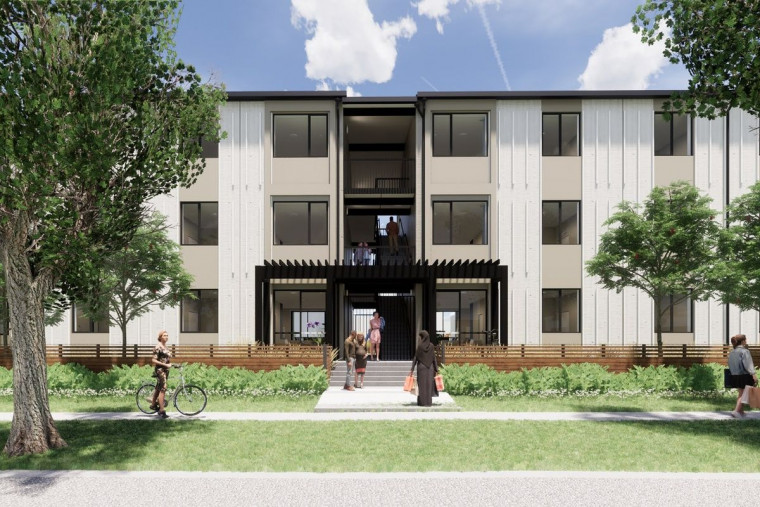
Peddlethorp's Manuel Diaz identifies some of the challenges and opportunities facing architects under the New Zealand Government’s Building for Climate Change programme.
Changes are coming fast to the building industry, driven by the Ministry of Business, Innovation and Employment’s (MBIE) Building for Climate Change programme. This is the direction we need to take to address carbon emissions, energy efficiency and cost. But, adaptation won’t necessarily be easy.
The new legislation has two clear goals: to cut carbon emissions associated with building and construction, and to manage and reduce operational emissions, making homes cheaper to live in and more comfortable for occupants.
On the first point, the Building Code changes include targets to reduce embodied carbon1 in buildings and will assist towards our collective goal of being a carbon-neutral country by 2050. It is reported that construction constitutes 20 per cent of total carbon emissions in New Zealand2.
For people living in many homes in New Zealand, the impact on heating bills will be massive: people who currently spend $250 per month heating a home, could instead spend $250 over four or possibly five of the coldest months. That is a saving of up to 80 per cent on energy bills over the winter period.
For architects, developers and builders, these changes will happen fast. Starting in 2021, the Building Code will begin a series of updates. To meet the Code, we will need to build to increasingly strict New Zealand Green Building Council (NZGBC) Homestar standards: 6 Homestar V. 5 in 2024, 7 Homestar V. 5 in 2027, and 9-10 Homestar V. 5 in 2030-35. In approximate terms, this represents a reduction in thermal demand from 80-90kWh/m2.a (kilowatt hour per square meter per annum) today, to 30kWh/m2.a by 2027, and 15kWh/m2.a by 2035 latest. As the NZGBC aims to exceed minimum government standards, the requirements for Homestar will likely keep increasing as the Building Code changes.
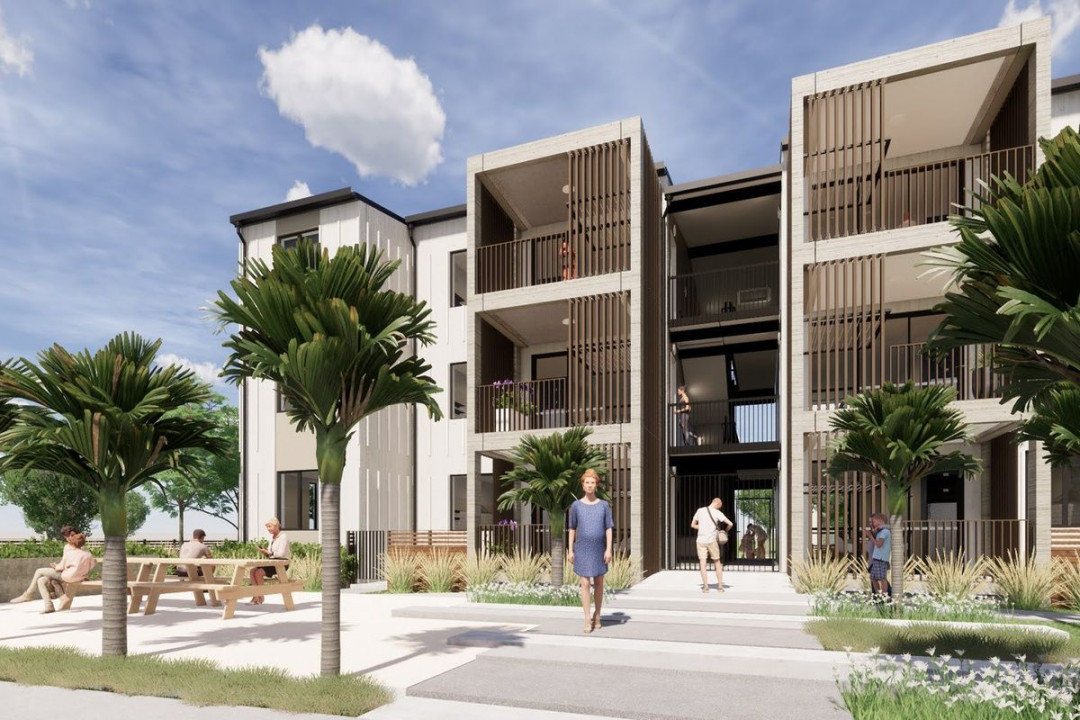
The Bader Ventura development will feature 18 homes, designed to be healthy and comfortable for owners and tenants. Image: Render courtesy Peddlethorp
All of this means a quantum shift for architects – and the building industry as a whole – in their thinking and modus operandi.
Further, some projects will require designers to demonstrate they are taking positive measures to reduce carbon emissions, including producing a carbon brief to reduce whole-of-life embodied and operational carbon. Importantly, if government agencies choose to proceed with a carbon-intensive option, their reporting must explain why decisions were made, and be signed off by the Chief Executive.
I believe the Government is exhibiting incredible leadership on this issue and demonstrates clarity of vision rarely seen in politics. Putting a 20-year vision ahead of securing a third term is a brave move that certainly won’t guarantee re-election but will attract many objections from the building sector.
Already there’s confusion over the building changes – especially regarding the sustainability options, which are unarguably complicated; costs are unknown and some will use this as an excuse for taking shortcuts or even resisting the impending changes; the continuing lack of skilled labour will continue to place pressure on a stretched construction industry; and the lack of clear, concise information makes client decision-making very challenging.
At Peddlethorp, I’ve been able to work with our team on adapting and tackling the challenges head-on. We’ve been leaning on research-driven design and drawing on our passion for new technologies to ensure we continue to deliver technically well-resolved buildings with high levels of quality and amenity.
Actively fostering partnerships with builders has reinforced a long-standing belief that it’s important to include them at the table to actively influence design. I think it’s vital to strengthen whanaungatanga, or kinship, building relationships with all partners and stakeholders, including iwi, clients, councils and contractors as well as builders. With this in mind, honest, transparent discussion alongside sustainability are fundamental parts of the design process.
Peddlethorp has been extremely fortunate to partner with Crown agency Kāinga Ora – Homes and Communities, which is well-placed as an agent for change. Kāinga Ora is using its considerable resources and connections to pave the way and anticipate the pressure points the industry will undoubtedly feel when changes come into effect.
For example, we are currently involved in a Kāinga Ora project to construct a multi-home development in Māngere, Auckland. The Bader Ventura project is a three-storey, 18-home building designed to reduce embodied carbon as well as heating costs; it meets the most advanced Building for Climate Change standards about 12 years ahead of schedule.
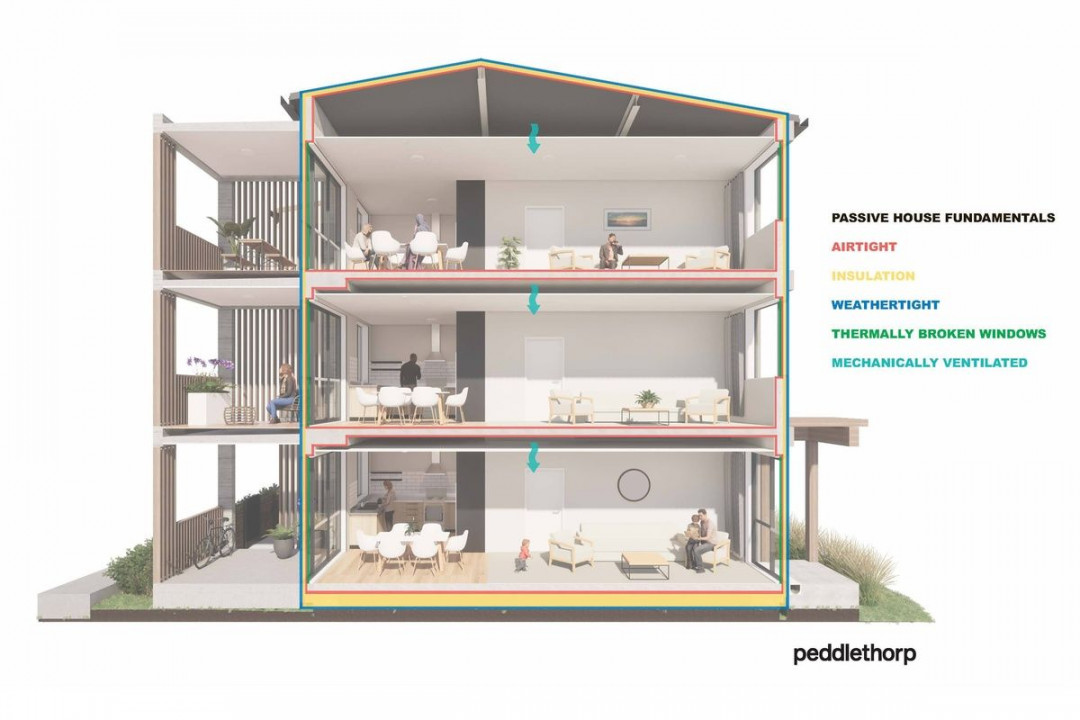
Designing to Passive House standards helps ensure that homes remain temperate year-round through thermally-broken materials. Image: Render courtesy Peddlethorp
Bader Ventura is also on track to deliver the first Passive House public housing project funded by Central Government in Australasia. This milestone project gets me out of bed every morning with huge optimism about Tāmaki Makaurau’s future and for my children, who will grow up in a world where climate change is the norm.
Design characteristics of the Bader Ventura project include:
A ventilation system that controls indoor air quality at all times
Openings within the building envelope that include thermal breaks and meet high insulation and airtightness requirements
A continuous layer of high-performance insulation around the building’s envelope to reduce indoor-outdoor heat transfer
Airtight construction preventing uncontrolled air exchange, thereby avoiding mould growth and structural damage
Space heating demand that cannot exceed 15kWh annually or 10W (peak demand) per square metre of usable living space
Space cooling demand that roughly meets the heat demand with an additional climate-dependent allowance for dehumidification
Primary energy demand that doesn’t exceed 120kWh annually for all domestic applications per square metre of usable living space
A verifiable air tightness maximum of 0.6 ACH (air changes per hour) at 50 Pascals pressure
Year-round thermal comfort for all living areas, with temperatures not exceeding 25 degrees Celcius for more than 10 per cent of the hours in any given year.
We place major emphasis on thermal breaks, reducing or eliminating the thermal bridges (where heating or cooling can transfer from one space to another) used in traditional homes and buildings. Using thermally broken joinery ensures that the internal surface temperature of the joinery is high enough to prevent condensation, while insulated wall panels reduce cold joints at wall and floor junctions to provide a high-performing building envelope.
These are just some of the challenges and opportunities architects will have to adjust to as we seek to decarbonize building construction. There’s no denying change is hard. The industry must accept that buildings need to be designed and built differently.
Architects need to upskill to convey accurate information and lead the required change of direction. Success will hinge on educating all parties involved, including clients, consultants, and contractors about the changes.
Footnotes
1 All carbon emissions attributable to the building itself, i.e. the construction materials and products across the life cycle of the building. This includes emissions across the full supply chain of construction materials and products, construction processes (and the waste arising), repair and maintenance, and processes at the end-of-life of a building.
2 Engineering NZ Article 8 Sept 2020: MBIE is asking for feedback on two frameworks, which will shape the Building for Climate Change Programme.
Words: Manuel Diaz
Images: Render courtesy Peddlethorp




 Indonesia
Indonesia
 Australia
Australia
 Philippines
Philippines
 Hongkong
Hongkong
 Singapore
Singapore
 Malaysia
Malaysia


